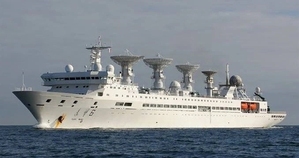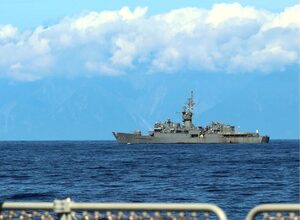China’s Chang’e-6 sample studies cast light on Moon’s far side
Beijing, Nov 15 (IANS) The latest discoveries achieved via studies of lunar rock samples retrieved by China’s Chang’e-6 spacecraft were published in the world’s leading scientific journals on Friday, revealing the volcanic history of the Moon’s lesser-known far side, which is distinct from its near side.
Rock samples returned by Chang’e-6, which had touched down on the lunar surface a few months earlier, have revealed two volcanic events that occurred on the Moon’s far side 2.8 billion years ago and 4.2 billion years ago, respectively, according to a new study published in the journal Nature, Xinhua news agency reported.
In the study, researchers at the Institute of Geology and Geophysics of the Chinese Academy of Sciences (CAS) analysed 108 basalt fragments from lunar samples collected at the Chang’e-6 landing site. They determined that 107 pieces were formed approximately 2.8 million years ago, revealing a unique volcanic event dating back 2.8 billion years that had not been observed in previous samples obtained from the near side of the Moon.
The remaining fragment, dating back to 4.2 billion years ago, is believed to have originated from a region south of the landing site. It is the oldest lunar rock sample with a precisely determined age to be returned to Earth, the study noted.
Another study published in the journal Science, emphasises the distinctions between the Moon’s two sides.
Researchers from the Guangzhou Institute of Geochemistry under the CAS used various techniques to confirm that the low-titanium rock samples collected by Chang’e-6 are approximately 2.83 billion years old — which suggests recent volcanic activity on the far side of the Moon.
This discovery also adds an important notch to the Moon’s crater timeline, suggesting that after an earlier significant decrease, the frequency of crater impacts on the Moon has remained relatively stable from at least 2.83 billion years ago, according to the research team.
The study also challenged the traditional belief that the thicker lunar crust on the far side of the Moon prevents volcanic eruptions. However, the researchers discovered a scarcity of large volcanic rocks even in areas with a thin crust near the Chang’e-6 landing site. They suggested that other factors, such as the composition of the mantle source, may also have an impact on lunar volcanic activity.
“The samples returned by Chang’e-6 provide the best opportunity to investigate lunar hemispheric differences,” said Professor Xu Yigang, leader of the study published in the journal Science.
People on Earth can only ever see one lunar face because the Moon takes about the same amount of time to rotate once as it does to complete a single orbit of Earth. As a result, scientists divide the Moon into two hemispheres, namely the side that always faces us, known as the near side, and the one that is always turned away from us, which we refer to as the far side of the Moon.
The Moon’s far side is very different from its near side. For example, volcanic eruptions flooded parts of the surface with lava, producing rocks known as mare basalt — which occupy over 30 per cent of the near side of the Moon, but less than 2 per cent of its far side.
–IANS
rvt/




